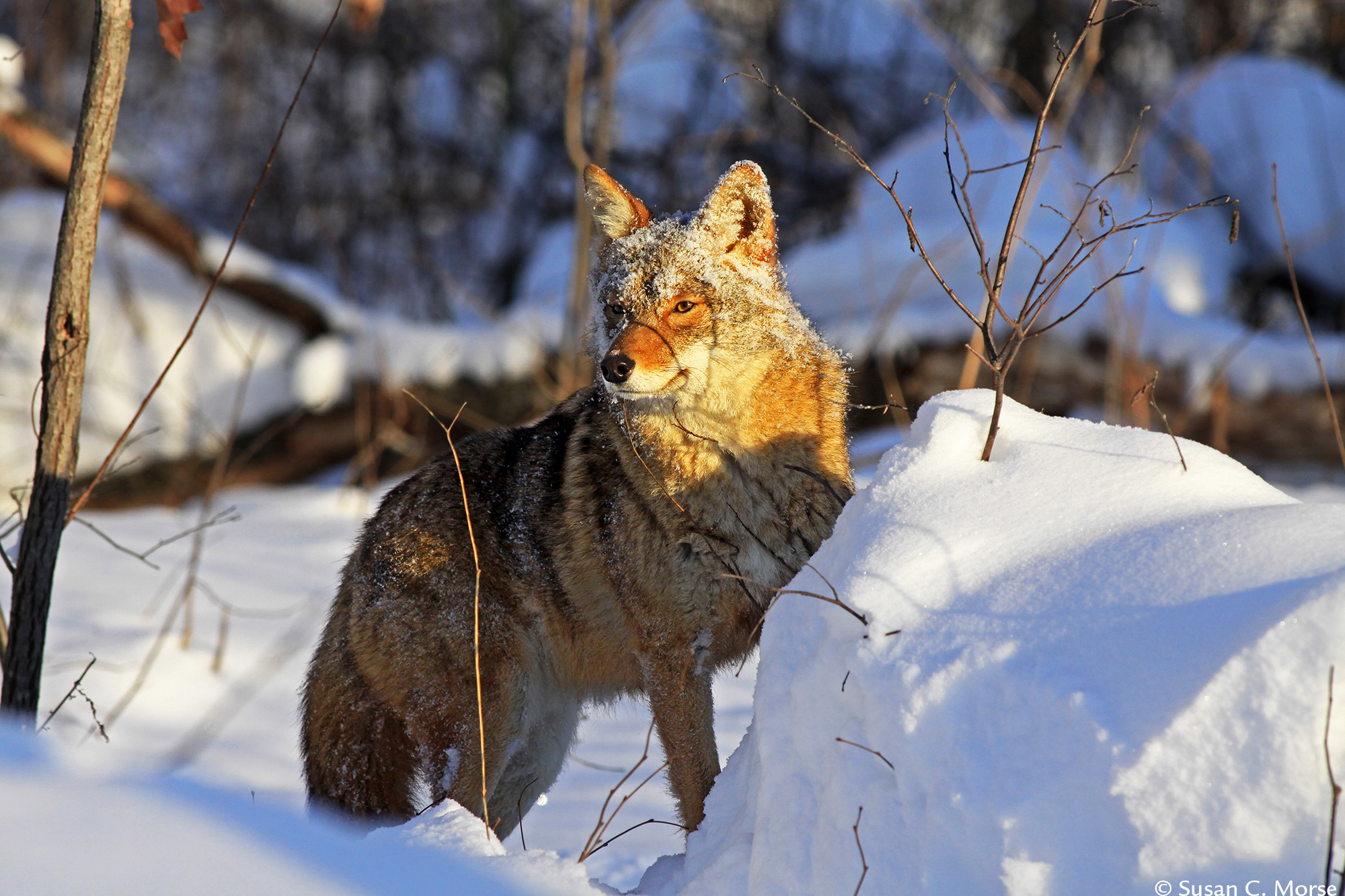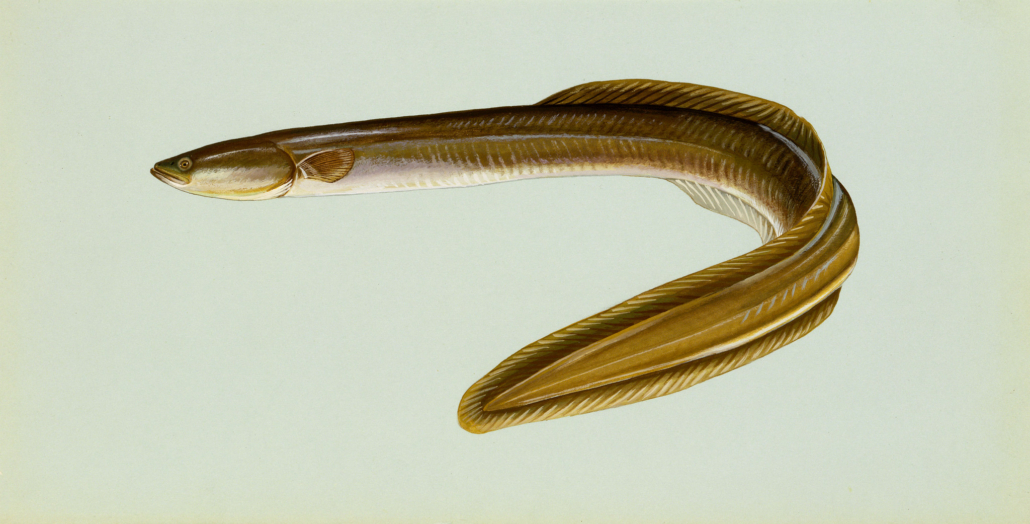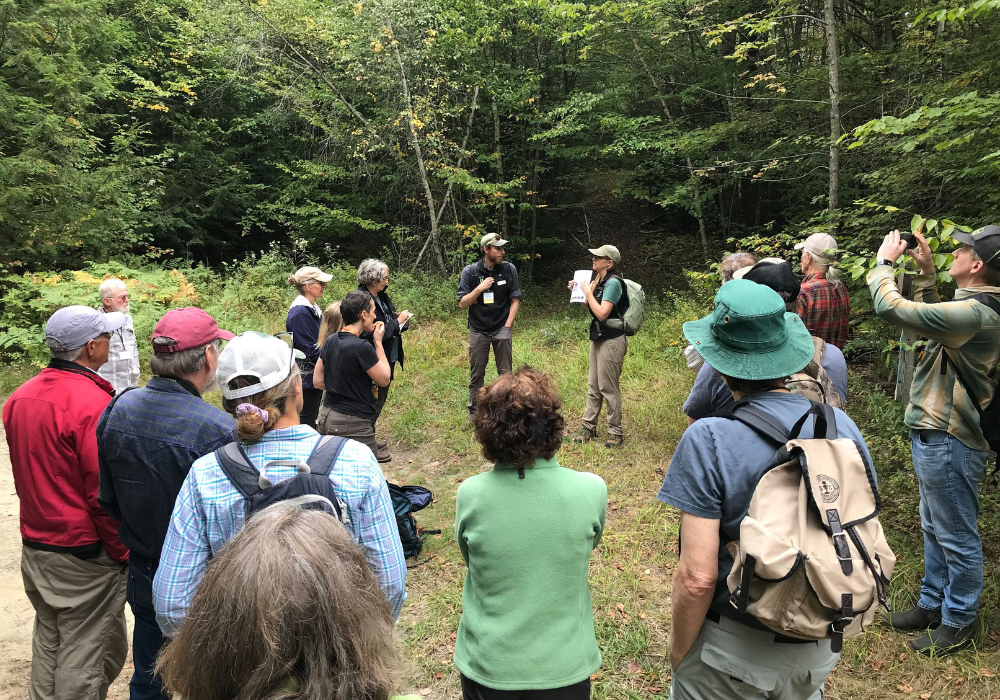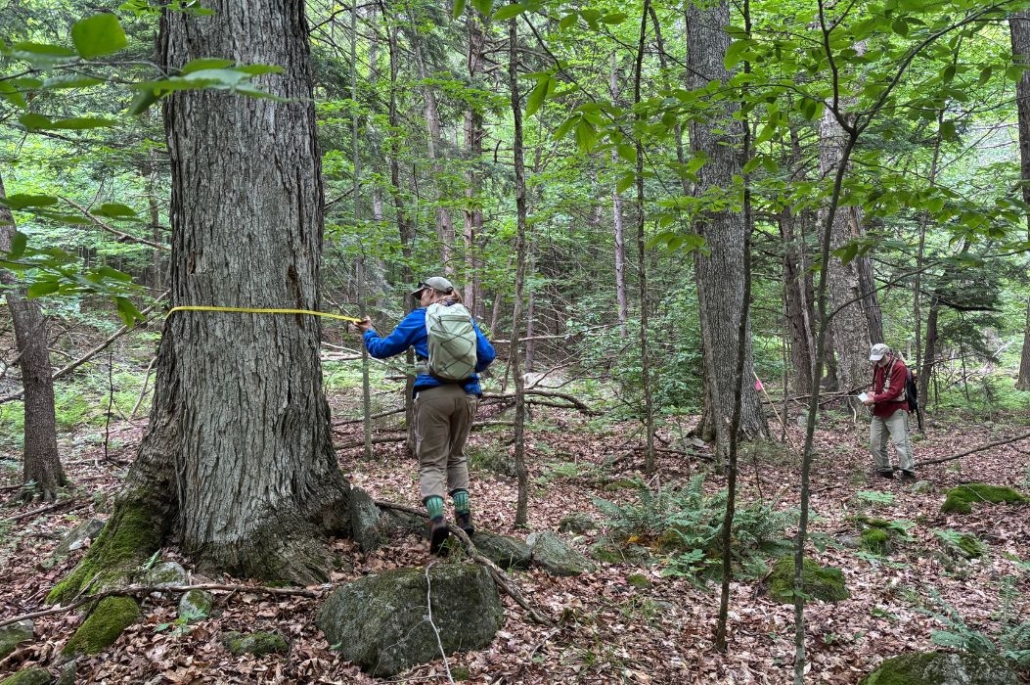The Eastern Coyote: An Adaptable, Misunderstood Addition to the Northeast’s Ecology
Among the myriad species documented by wildlife cameras across Northeast Wilderness Trust’s (NEWT) wilderness preserves, coyotes are perhaps the most ubiquitous. Whether in cedar swamps, atop spruce ridges, or roaming old fields, these adaptable creatures can be found in nearly every habitat throughout New England. Yet it may come as a surprise to many that coyotes are relative newcomers to our landscape.

A Relative Newcomer
Coyotes did not appear in the Northeast until the 1940s. Beginning with European colonization, the conversion of large swathes of the eastern United States from forest to fields allowed this Great Plains species to move eastward. Along the way, coyotes interbred with remnant wolf populations in the Upper Midwest and Canada. The resulting hybrid, known as the eastern coyote, had become a larger, more robust, and wolf-like version of its western predecessor by the time it reached New England.
According to Vermont Fish and Wildlife, eastern coyotes are not considered invasive but rather naturalized—they have integrated into the native ecosystem and now partially fill the niche once occupied by wolves and cougars, which were extirpated from the Northeast by the late 1800s. The elimination of wolves, in particular, permitted coyotes to thrive, as wolves often establish territorial dominance and suppress coyote populations in regions where they coexist.
Research into coyote genetics has blurred the distinction between these former competitors. A 2014 study published in Molecular Ecology analyzed the DNA of 437 eastern coyotes and revealed a blend of several species: coyote, wolf, and domestic dog. According to the data, the eastern coyote’s genome was, on average, 64 percent coyote (Canis latrans), 13 percent gray wolf (Canis lupus), 13 percent eastern wolf (Canis lycaon), and 10 percent dog (Canis familiaris). This means that approximately 25 percent of their DNA is wolf, though individual variability can be significant. For example, a hunter in Cooperstown, New York killed a “coyote” in 2021 that was later found to be 98 percent wolf based on genetic analysis.
Coyote Ecology
The increasing abundance of coyotes on eastern landscapes has fueled misconceptions about their ecology. One frequent claim is that coyotes must be hunted to control their populations and prevent excessive deer predation. In reality, coyotes are compensatory breeders—they adjust their reproduction based on population pressures. When more coyotes are killed, the survivors tend to produce larger litters, meaning that hunting can actually increase their overall numbers. As for their effects on deer populations, coyotes are mid-level or “meso-” predators and opportunistic hunters. They primarily target small- to medium-sized prey like chipmunks, rabbits, and snowshoe hare, and while they may occasionally prey on deer or livestock, they usually only take old or sick individuals rather than healthy adults.
Coyotes’ adaptability extends into their social behaviors. The coyotes in the above video communicate and play as they move through the snowy woods of NEWT’s Moriah Wilderness Preserve in New York. Like their opportunistic diet and flexible reproductive strategies, coyotes are also adaptable in their social structures. They can range from solitary individuals to mated pairs, family groups, or even packs. This flexibility allows them to adjust to environmental conditions and survival needs. For instance, in areas where food is scarce—or where the only abundant prey species are large mammals like deer—forming a pack can provide a significant advantage.
Coyotes in the Northeast are the subject of fierce debate. But beyond the misconceptions is a species that exemplifies resilience and adaptability in a constantly changing landscape. By understanding and respecting these remarkable creatures as filling a critical ecological role, we can gain a deeper appreciation of them and the wild places they call home—a reminder that Nature’s inventiveness often comes in unexpected forms.




